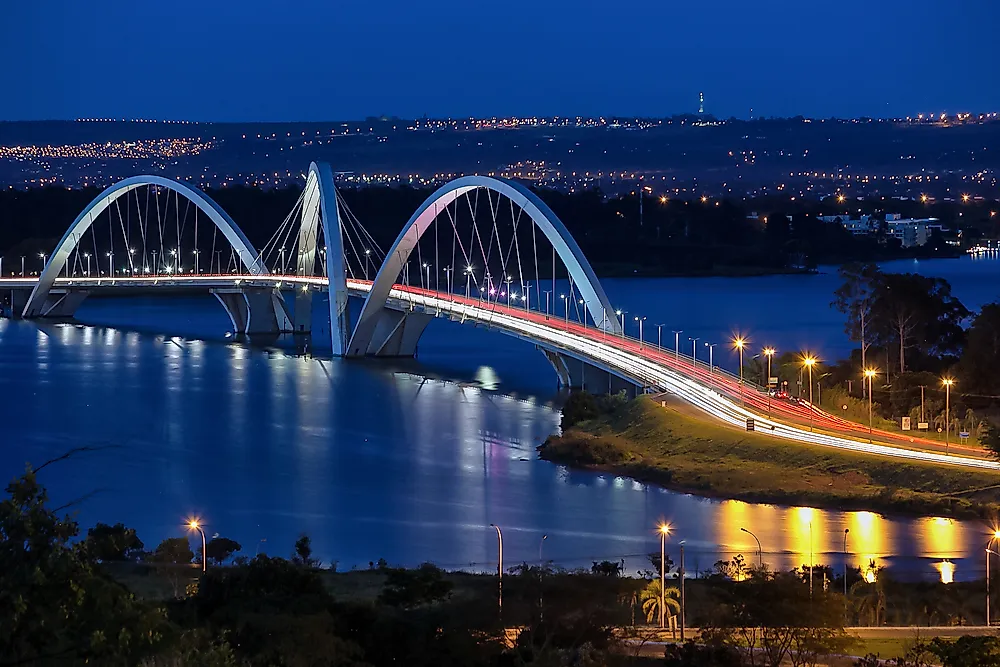What Is The Capital of Brazil?

Brasilia has been the capital of Brazil for 57 years. It was founded on April 21, 1960. This makes Brasilia a relatively young city compared to most Brazilian cities. However, what was the capital city of Brazil before Brasilia became the capital?
Rio de Janeiro's History as a Seat of Power
Rio de Janeiro is well-known for its beaches and for Carnaval. It is also an old city, founded in 1565. However, there is something else that Rio de Janeiro is credited for, but not often known for. This city has functioned as a seat of power for much of its history. It started out as the capital of the Captaincy of Rio de Janeiro. In 1763, Rio de Janeiro was the capital of the Portuguese colony of Brazil. Rio de Janeiro's history as a seat of power would not end there.
The Portuguese Royal Court had its seat of power in Lisbon for most of its history. However, Brazil temporary housed the Portuguese Royal Court during the last 14 years of being a colony of Portugal. Between 1808 and 1822, the Portuguese Royal Court called Rio de Janeiro home. Portugal's monarchy in Rio de Janeiro would be replaced by Brazil's own monarchy in 1822. This is the year that Brazil became an independent country. Rio de Janeiro would be made the capital of Brazil until 1960.
Geography of Rio de Janeiro
To understand why Rio de Janeiro used to be the capital of Brazil, geography must be understood. In particular, the geography of population. Rio de Janeiro's location within Brazil is on the Atlantic Coast. The highest concentration of Brazil's population is located near the Atlantic coast. When Rio de Janeiro was the capital of Brazil, this is where the majority of its population, resources, and economic activities have resided. Rio de Janeiro's relative location is somewhat central compared to other areas on Brazil's Atlantic coast. At the time, Rio de Janeiro's location was considered a logical choice based on where most of Brazil's population lived. Today, the majority of Brazil's population is concentrated on the Atlantic Coast. However, more people are living in inland areas. Rio de Janeiro's position as capital city of Brazil reflected the geographic distribution of Brazil's population throughout much of its history.
Plans to Move the Capital City
For much of Brazil's history, there was talk of moving Brazil's capital city further inland, away from the coast. A proposal was made on where a new capital city would be built. The new capital was planned to be built in a more centrally located region of inland Brazil. The name of the proposed capital was supposed to be Brasilia. The reason for such a proposal was to put the capital in a less developed region, away from the areas of high population density. This early proposal was never passed. The reason was due to the dissolution of the General Assembly by then-Emperor Pedro I.
In 1889, Brazil's days of being ruled by a monarchy ended. Brazil became a republic. In becoming a republic, a Constitution was drafted. In its constitution, a clause was included regarding a new capital city. That clause stated that the capital city of Brazil should be moved from Rio de Janeiro to a place further inland, where it would have a relatively central location. The idea was about putting the capital city in a more neutral region
Juscelino Kubitschek de Oliveira became Brazil's 21st President in 1956. He would call for Brazil's capital city to be moved, as well as the construction for the new capital city. Kubitschek would do this with the consideration that the Brazilian constitution stated that the capital of Brazil needed to be moved to a more centralized location. A location was chosen for the new capital city, within the Brazilian state of Goias. The new capital's city plan would be known as "the Pilot Plan". The layout of the city is shaped similarly to that of a bird or airplane. Brazilian architect/city planner Lucio Costa was responsible for designing the layout of Brasilia. Brazilian architect Oscar Niemeyer designed many of the buildings in Brasilia. On April 21, 1960, Brasilia became the capital of Brazil.
Geography of Brasilia
Brasilia is located in the Central-West region of Brazil. This city is situated in the Brazilian Highlands. Population growth and economic growth has taken place in Brazil's interior regions. More people have moved to the inland areas such as Mato Grosso and Goias. Goias was selected as the place for building Brazil's capital city. The city of Brasilia is part of its own federal district, similar to Washington DC, in the United State of America. Brazil's capital city being relocated to Brasilia reflects a desire to move the capital to a more central location. It also reflects the population growth of Brazil's interior regions.











